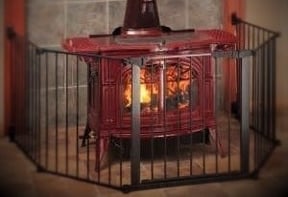 As we head into Fall, it’s important to get prepared for cooler weather and a large part of that is fire prevention. A fire is a dangerous and scary experience that not only causes damage and property loss, but can also endanger the lives of your loved ones.
As we head into Fall, it’s important to get prepared for cooler weather and a large part of that is fire prevention. A fire is a dangerous and scary experience that not only causes damage and property loss, but can also endanger the lives of your loved ones.
It is vital to make sure that all fireplaces and wood-burning stoves are inspected and cleaned before and throughout their use often. The following tips can help reduce the dangers associated with fires:
• Have a proper working fire extinguisher readily available in a prime location known to all family members. Be sure everyone knows how to use it.
• Install and regularly test smoke detectors around the house, being certain to have at least one in each of the rooms that have stoves or fireplaces.
• Never leave children alone with a fire in a wood-burning stove or fireplace.
• Test all appliances that contain exhaust fans such as stovetop vents, HVAC units, bathroom fans, etc. to verify that they don’t interfere with proper venting of the wood-stove.
• Be certain that your wood stove has been safety tested and displays a UL or NFPA label.
• When you re-fuel, avoid smoke spillage by slowly opening the door.
• To properly start a fire in the wood stove, use crumpled paper on the floor of the stove and cover with a small amount of kindling. Open the damper/draft fully and light, holding the door slightly open for several minutes before closing tightly. After the wood begins to burn brightly; add more dry seasoned wood, using draft control to determine the burn rate. Never use kerosene, gasoline, or charcoal lighter fluid!
• Remove and store ashes in a non-combustible tightly-lidded metal container far away from flammable items.
• Verify that water heaters and furnaces that are attached to the chimney of a wood-burning stove or fireplace have tight-fitting seams and joints.
• Ensure that fireplaces are equipped with glass doors or a tight-fitting spark screen to prevent sparks from reaching carpets or other flammable items; and keeping children and pets safe from harm.
• Burn only dry, seasoned wood to prevent creosote (soot) buildup.
• Inspect flue vents pursuant to manufacturer guidelines, and have them cleaned by a qualified individual.
• Clean your chimney when the creosote reaches 1/4 inch, and check often.
• Keep the area clear around the heating unit and flue at all times.
In case of fire, immediately call 911 and get everyone out of the house. If it is a wood-burning chimney fire (often accompanied by loud crackling, roaring, or rumbling noises and the stove pipe turning red-hot); close the stove door, damper, and draft opening to cut off the air supply to the fire. Never throw water on a hot stove.

